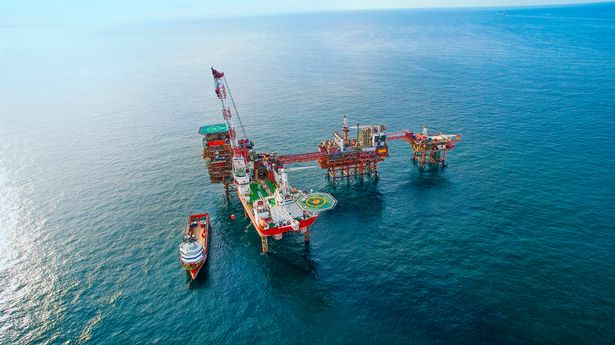
With gas prices now more than five times the cost of a barrel of North Sea benchmark Brent Blend, the outlook for energy across Europe including the UK, is shocking.
At time of writing, Europe’s gas price is now equivalent to $410 oil and set to rocket further as winter demand starts kicking in over the next several weeks.
By contrast, forward Brent has fallen back to around $95 from over $133 in March; but what might happen from now on is very uncertain indeed except that the direction will surely be upwards again, so inflicting further massive pain, notably on the transport industry and motorists.
Some are understandably cashing in on the crisis, such as the US, whose crude exports recently hit an all-time high of five million barrels per day and won’t stop there.
Opec has been leery about doing anything more than token in the oil barrels department, though there are complications leading to under-production.
The larger Opec Plus group produced nearly three million barrels per day less crude in July than anticipated by its leadership as sanctions on some members and low investment by some others crippled its ability to usefully cool the world’s current energy crisis triggered by Russia invading Ukraine in February.
That said, a small increase of 100,000bpd is anticipated this month-on; a piddling amount when set against what Russia exported prior to the West piling on sanctions against the Putin regime.
Turning to gas, its price is up a staggering 525% since closing at $1.48 per million BTU in June 2020 when Covid-19 had shut much of the US economy down. And further upward spikes are anticipated as autumn and then winter get a grip.
While winter demand will climb during Q4 and into Q1 next year the view is that the US won’t run out of gas, even despite LNG exports likely pushing higher as Washington seeks to ease the pain inflicted by Russia curtailing/cutting off gas supplies to EU states.
But then this is the US where, for the past decade and more, oil & gas production has been massively turned after many years of decline, all thanks to massive shale oil and gas successes.
Whilst US domestic energy prices have shot up and will rise further, it won’t be anything like as bad as the mega-crisis gripping Europe, where prices have lately been running seven times higher than in the US, and where rationing of supplies is clearly on the cards, AND where recession now seems inevitable.
However, at least the European Union and various member states individually have sought to protect their citizens with a variety of measures that make reliefs being offered in miserable, depressed post-Brexit UK by the Tory government seem tawdry.
The European Commission in July asked its member states to reduce gas demand voluntarily by 15% this winter with the possible introduction of mandatory cuts. That’s tough.
However, the massively gas-deficient bloc also aims to refill storage to 80% of capacity by November 1 to provide a buffer for peak demand winter months and to mitigate against Russia further reducing or even severing gas supplies completely.
Progress is clearly being made. According to Reuters, European gas storage levels surpassed 70% at the start of August, in line with their average over the 2017-2021 period, according to data from Gas Infrastructure Europe (GIE).
Germany, hardest-hit by Russia’s reduced gas flows and home to the largest storage capacities in the EU, has set a higher goal for itself and aims to be 95% full by November. Impressive until you realise the EU’s largest manufacturing economy will only have enough natural gas to cover 2.5 months of consumption this winter if Russia completely suspends deliveries, according to Klaus Muller, the president of Germany’s energy regulator.
Replenishing the tank, so to speak, is something the UK is barely able to do as its sole North Sea gas storage facility, Rough, was stupidly shut down in 2017.
At least it is at least to be re-opened, albeit not soon enough to in any way ease the dire situation that prevails, even if refilling starts later this month (SEPTEMBER), which is apparently what is promised.
Rough has extremely limited capacity; supposedly 10-14 days equivalent of supplies relief, or 4% of annual consumption. As I write this the only remaining obstacles to reopening the site are an agreement between owner Centrica and the UK Government on state support, and final regulatory consent from the North Sea Transition Authority (NSTA).
Despite the great energy transition gathering pace, it strikes me that the UK needs more, much more natural gas buffer storage than it has; perhaps the dash for CCS storage will facilitate.
Woeful storage is an Achilles heel of the UKCS; arguably a consequence of the systemic failure of 50 years of lousy governance by Westminster and of a market-led energy industry that is crying out for nationalisation.
Hell, the UK’s position is so nuts that it doesn’t have the capacity to refine and manufacture the oil-based products it uses. Our overall refinery capacity has fallen by around 30% since 2010.
This means we rely on other countries to produce the products we need … a massive waste of energy to start with. And gas exports (we are NOT self-sufficient) are on the rise; up 67% to the Netherlands in June alone. This is crackers.
To wrap, I think it is gradually dawning that Russia is the big winner in this terrible mess. The West can pile on as many sanctions as it likes, but Putin is laughing all the way to the bank. And oil & gas are the ace cards in its pack.
Recommended for you

 © Centrica Storage
© Centrica Storage